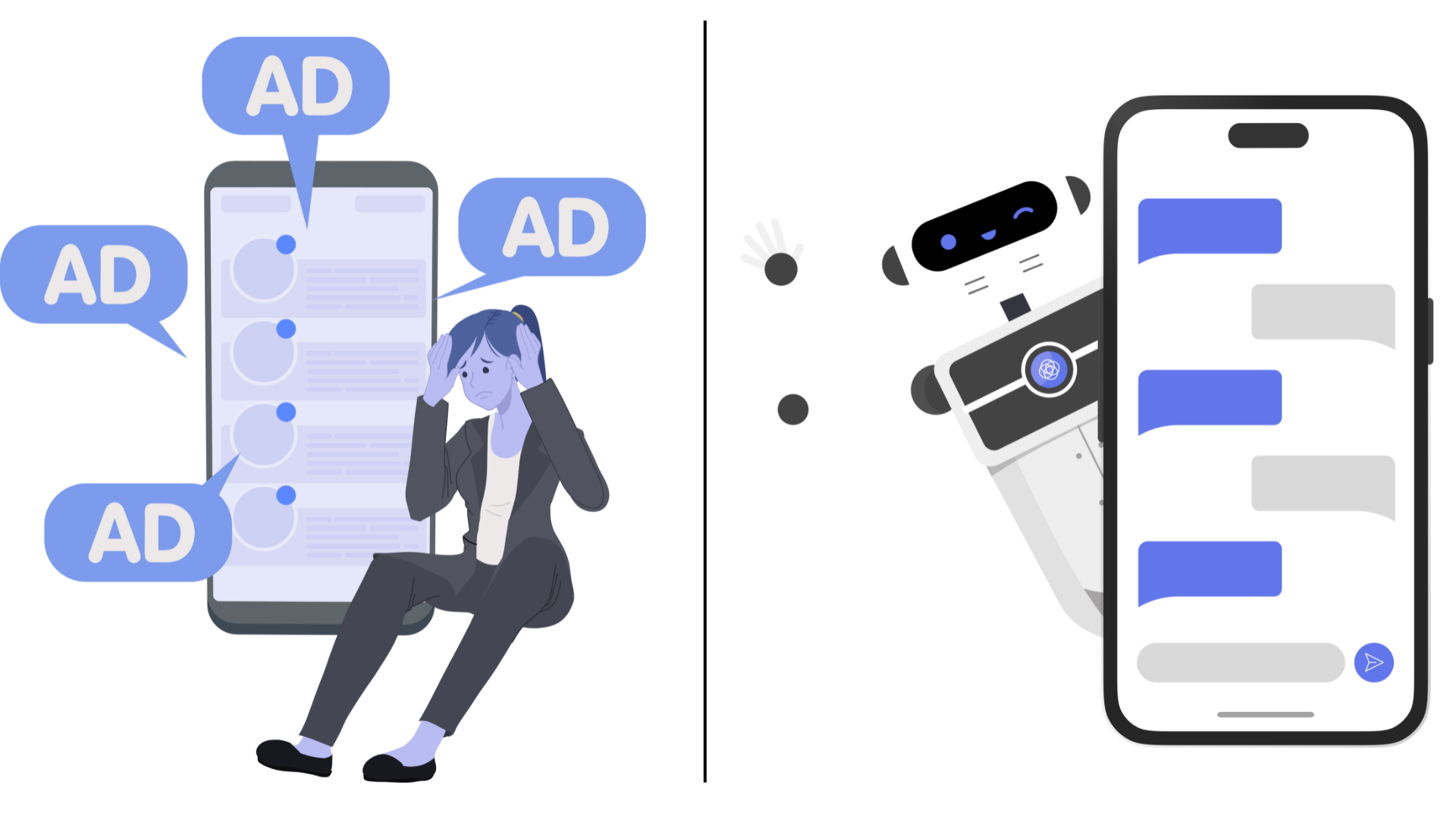Why Contextual AI Advertising Outperforms Traditional Ads

Marketers seek more effective, less intrusive advertising. Traditional digital ads — banner placements to retargeting campaigns — are so common users ignore them entirely.
Banner blindness is real. Consumers are more skeptical than ever.
But a new solution emerges: contextual AI advertising.
Instead of chasing users across the internet with cookies and endless impressions, this approach delivers ads inside the natural flow of AI interactions. It's timely, relevant, and respectful of user experience.
This article explores why contextual AI advertising isn't just another trend, but a fundamental shift that outperforms traditional digital advertising in engagement, trust, and ROI.
Traditional Digital Ads: What's Broken
Before exploring AI approaches, let's revisit what's broken in today's ad ecosystem:
- Ad fatigue: Users bombarded with thousands of ads daily, leading to decreased attention
- Banner blindness: People subconsciously ignore ads, especially in predictable placements
- Privacy concerns: Retargeting and third-party tracking raise ethical and regulatory issues
- Low engagement: Click-through rates for display ads remain under 1% on average
Traditional advertising is increasingly expensive yet delivers diminishing returns. Marketers need something new — a way to meet users in the right place, at the right time.
What Makes Contextual AI Different
Unlike traditional ads, contextual AI advertising doesn't rely on personal data trails. Instead, it leverages the conversation itself.
When users interact with AI assistants or chatbots, the context of their request becomes the trigger for ad placement.
Real-World Example
Someone asks AI for "tips on marathon training" → relevant brand sponsors recommendations for running shoes, nutrition supplements, or hydration products.
The ad is timely, useful, and connected directly to user intent.
Three Key Advantages
This creates three key advantages:
- Relevance: Ads appear only when topic matches product or service
- Respect: Users don't feel stalked across the web; ads feel like part of the experience
- Engagement: Context-driven ads lead to higher click, explore, and conversion rates
Why Contextual AI Outperforms Traditional Ads
Marketers care about results. Here's why contextual AI advertising consistently outperforms old formats:
- Higher engagement rates: Users see ads relevant to current activity, boosting interaction
- Trust through transparency: Clearly labeled sponsored messages feel more honest than hidden retargeting
- Improved ROI: Less wasted spend on irrelevant impressions means budgets go further
- Future-proof: As privacy regulations tighten, contextual ads don't rely on third-party cookies
- Better brand perception: Helpful ads create positive associations rather than annoyance
Case Example: Traditional vs. Contextual
Let's compare two scenarios:
Traditional Digital Ad
User searches for laptop on Monday. For two weeks, they see banner ads for laptops across unrelated websites — even after purchasing one.
Contextual AI Ad
Same user asks AI assistant: "What's the best laptop for remote work?" In that moment, a sponsored recommendation for a specific model appears, alongside organic advice. The ad is helpful, timely, and doesn't follow them afterwards.
The difference is clear: AI ads respect the moment, not stalk the person.
Brand Safety in Contextual AI
Another major advantage is brand safety. Traditional programmatic ads sometimes place brands next to inappropriate or irrelevant content. With contextual AI advertising, platforms can give marketers:
- Topic filters to avoid unwanted associations
- Clear reporting on where sponsored messages appear
- Options to approve or block categories in advance
This ensures brand values stay protected while still benefiting from contextual relevance.
Getting Started: Strategies for Marketers
Ready to experiment with contextual AI advertising? Here are practical steps:
- Choose natural fits: Select campaigns where your product logically aligns with user conversations
- Prioritize transparency: Ensure all AI ad placements are clearly labeled as sponsored
- Experiment and measure: Run small tests across different contexts and compare results
- Track deeper metrics: Beyond clicks, measure sentiment, conversions, and long-term brand lift
- Educate stakeholders: Help your team understand why AI advertising differs from traditional digital ads
The Future Is Contextual
Contextual AI advertising isn't just outperforming traditional ads today — it's setting the standard for the future. As AI tools become more embedded in daily life, users will expect marketing to be useful, not disruptive. Brands that adopt this mindset early will win both attention and loyalty.
Conclusion: A Smarter Way Forward
Traditional ads fight against user fatigue and increasing regulation. Contextual AI advertising, by contrast, works with the flow of conversations, not against them.
It delivers better engagement, protects brands, and creates value for users.
👉 Ready to move beyond traditional ads? Join AdsBind's early access and see how contextual AI advertising can transform your campaigns.